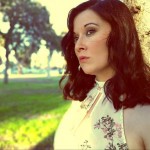Your push-up shouldn’t be pushing you to the brink of insanity. We all indulge in shedding that dreaded support when we walk in the door of our homes, but if you’ve got to get out of your brassiere because it’s pinching or causing soreness, you’re likely in the wrong size. In addition to being uncomfortable, a bad bra can hinder your breathing and cause back problems. And an ill-fitting garment also creates an unflattering and dumpy silhouette in even the most well-made attire. It’s that combo that drove me to stop guessing and take the steps to figure out my proper size. Outfitted in cheap bras, I kept admiring how much cuter my shape looked without one and lamented how itchy and unpleasant they felt, from straps that sagged to underwires that were digging into my ribs. To treasure adorning my chest again, I used an easy online guide to get started and began restocking my bra wardrobe.
I didn’t want to use a specific lingerie brand to tell me what size to buy, since we’ve all experienced how what one retailer calls a small, another calls their medium, and so on. Without aligning to a certain store, I found the HerRoom Bra Size Calculator, which made it pretty easy, with a few caveats about accuracy. “… A lot of factors can affect your measurements – the bra you’re wearing, the firmness of your breasts, the broadness of your back, the narrowness of your shoulders. These factors and more can give you a false bra size once you’ve measured yourself.” The site also notes that for size 38D and larger, a better guide can be found here. But if you’re in the average range, like me, and want to stop guessing between B or C, or quit grabbing a 38 when it’s on sale even though you think you’re a 34 but you’re not sure, it’s time to get right with your bra size. Here’s how:
STEP 1: Measure for band size: Keeping the measuring tape parallel with the ground, measure around your bra directly under your bust after expelling all air from your lungs – you want this measurement to be as small as possible. Round all fractional measurements to the nearest whole number. After a 38 band size, the band size should be the closest higher even number to your actual measurement So, 41.5″ is a 42 band. A 41″ measurement is a 42 band.

from www.herroom.com
STEP 2: Measure for cup size: Standing straight, with your arms at your side, measure at the fullest part of your bust (while wearing a non-padded bra) making sure the measuring tape is parallel with the ground and not binding. Round all fractional measurements to the nearest whole number.
STEP 3: *Calculate your bra size: Subtract your band measurement (step 1) from your cup measurement (step 2). Generally, for each inch in difference, the cup goes up by one size. See the cup size conversion chart below.

from www.herroom.com
Now that you’ve resized, the retailer is up to you. Preferences and finances are different for everyone, but without endorsing one store or dissing another, I will say don’t buy cheap, buy smart. Get quality fabrics, like soft and durable cotton, and leave the shimmery satin to strippers. Dodge the bullet shapes and go for subtlety rounded silhouettes. And don’t worry about buying a dozen, invest in one basic black bra and a white one and add colors and patterns when they’re on sale. — Casandra Armour











-300x169.jpg)





